Green Home Construction Increasingly Common
Green-home features are becoming more popular among home buyers and it’s led to an increasing number of builders who say they’re incorporating green features into the homes they build. For example, the National Association of Home Builders’ Green Multifamily and Single Family Homes 2017 SmartMarket Brief surveyed builders to find out how many were using green-building techniques. According to their findings, one third of builders said green building makes up more than 60 percent of their portfolio. And the expectation is that the number should continue to rise in coming years. Granger MacDonald, NAHB’s chairman, says green homes are here to stay. “These findings show that green building has become an established part of the residential construction landscape,” MacDonald says. “It is no longer a niche business; our members recognize the value of building green and are incorporating these elements into their standard business practices.” The increased interest is being driven by consumers who value things like energy efficiency and are looking for homes that create a healthier environment. Because of this, as awareness of these features grows, so will demand. More here.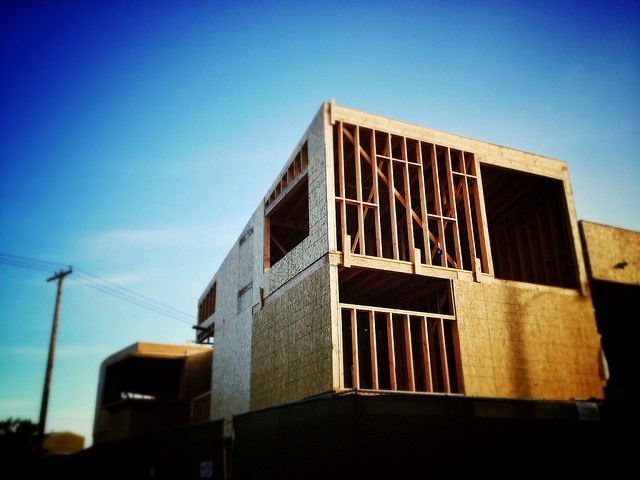
October Newsletter
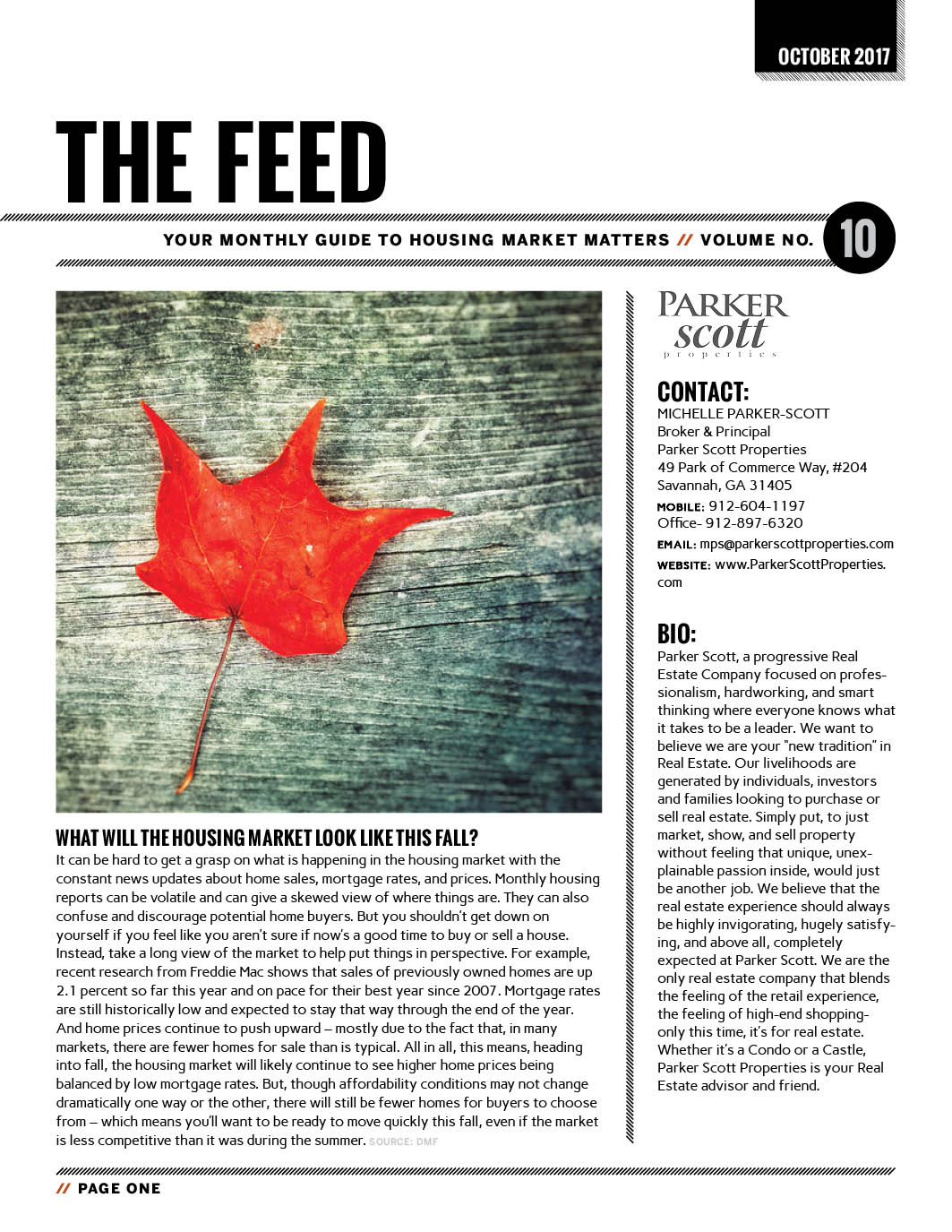
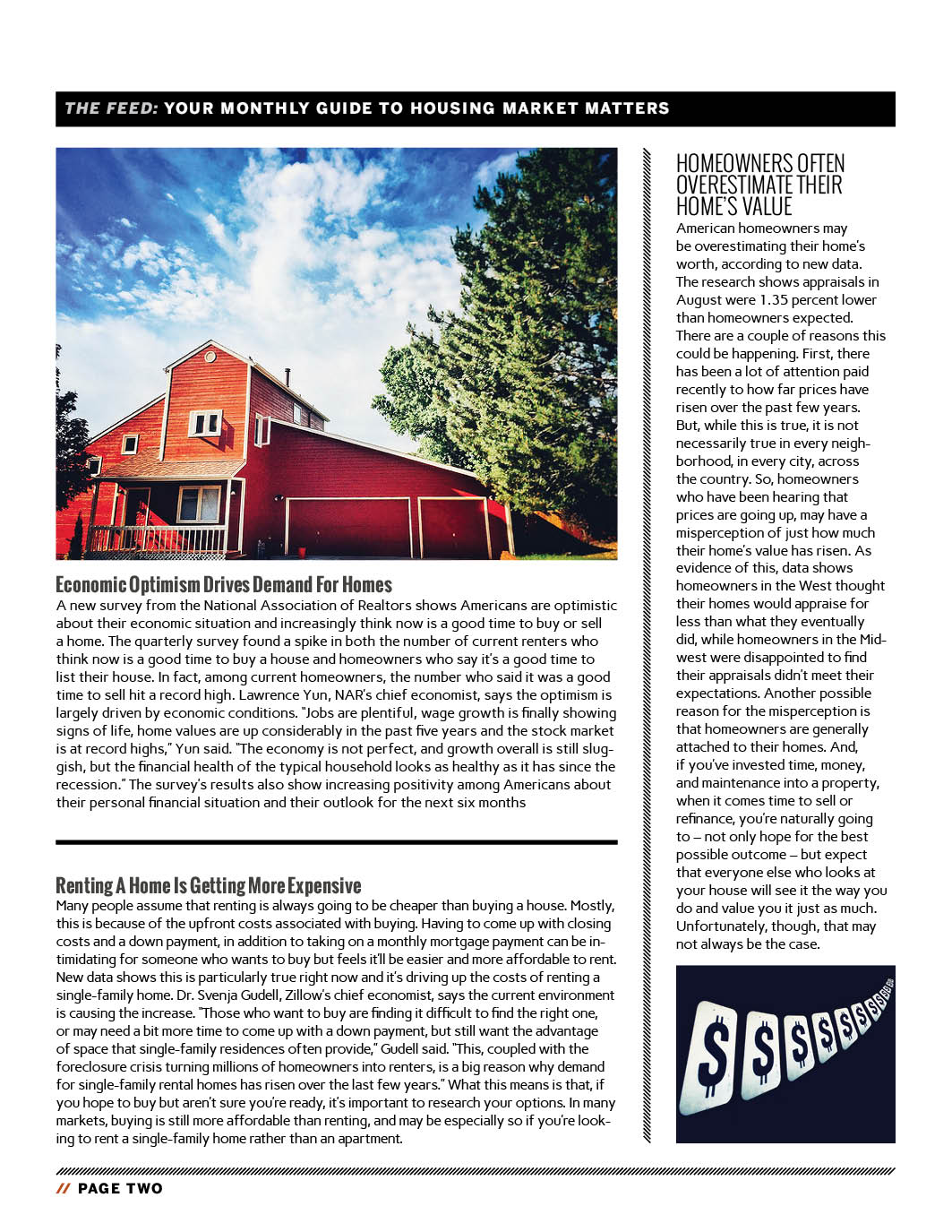
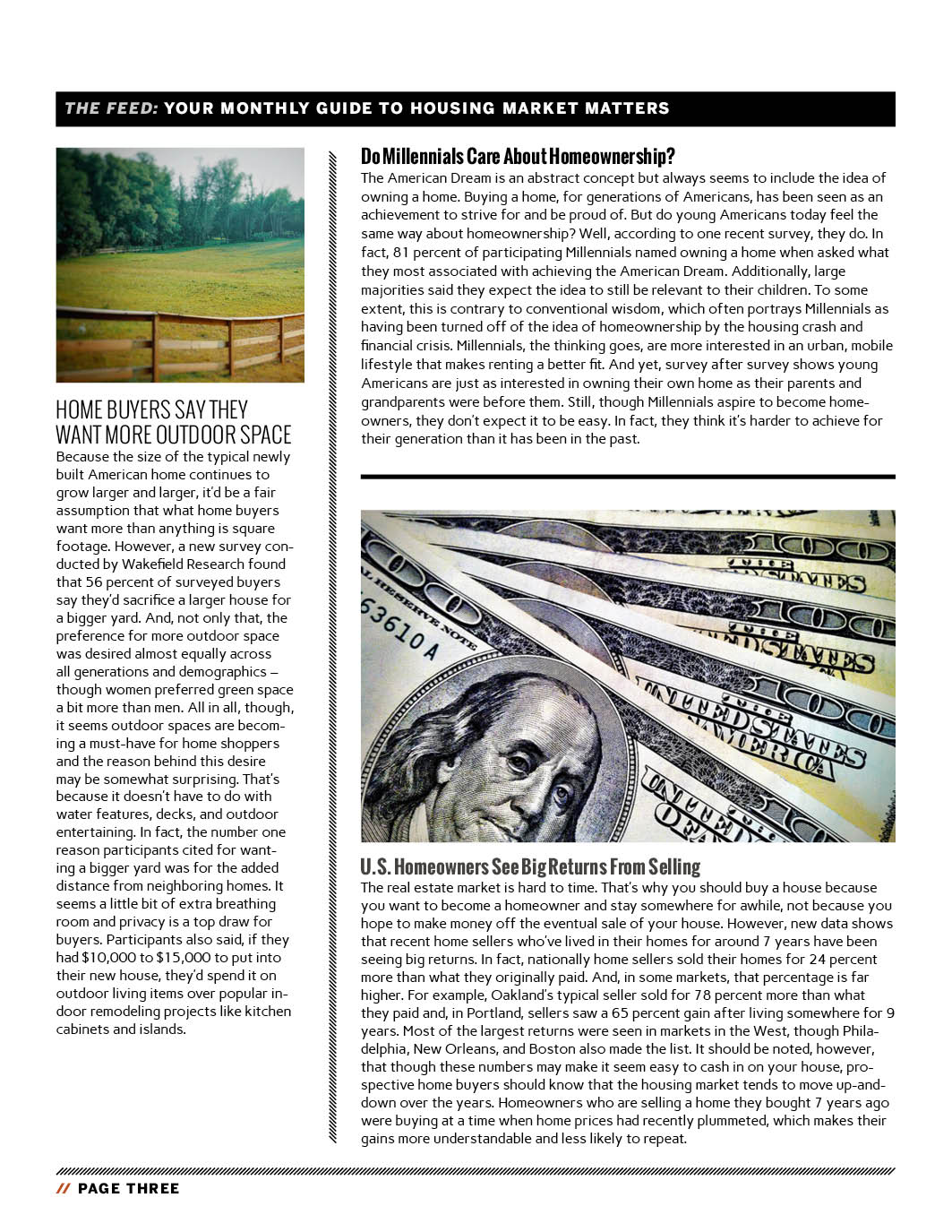
What Homeowners Say Is Their Top Regret
U.S. Homeowners See Big Returns From Selling
The real estate market is hard to time. That’s why you should buy a house because you want to become a homeowner and stay somewhere for awhile, not because you hope to make money off the eventual sale of your house. However, new data shows that recent home sellers who’ve lived in their homes for around 7 years have been seeing big returns. In fact, nationally home sellers sold their homes for 24 percent more than what they originally paid. And, in some markets, that percentage is far higher. For example, Oakland’s typical seller sold for 78 percent more than what they paid and, in Portland, sellers saw a 65 percent gain after living somewhere for 9 years. Most of the largest returns were seen in markets in the West, though Philadelphia, New Orleans, and Boston also made the list. It should be noted, however, that though these numbers may make it seem easy to cash in on your house, prospective home buyers should know that the housing market tends to move up-and-down over the years. Homeowners who are selling a home they bought 7 years ago were buying at a time when home prices had recently plummeted, which makes their gains more understandable and less likely to repeat. More here.
What Will The Housing Market Look Like This Fall?
It can be hard to get a grasp on what is happening in the housing market with the constant news updates about home sales, mortgage rates, and prices. Monthly housing reports can be volatile and can give a skewed view of where things are. They can also confuse and discourage potential home buyers. But you shouldn’t get down on yourself if you feel like you aren’t sure if now’s a good time to buy or sell a house. Instead, take a long view of the market to help put things in perspective. For example, recent research from Freddie Mac shows that sales of previously owned homes are up 2.1 percent so far this year and on pace for their best year since 2007. Mortgage rates are still historically low and expected to stay that way through the end of the year. And home prices continue to push upward – mostly due to the fact that, in many markets, there are fewer homes for sale than is typical. All in all, this means, heading into fall, the housing market will likely continue to see higher home prices being balanced by low mortgage rates. But, though affordability conditions may not change dramatically one way or the other, there will still be fewer homes for buyers to choose from – which means you’ll want to be ready to move quickly this fall, even if the market is less competitive than it was during the summer. More here.
Georgia Market; Low Inventory and Higher Sale Prices
Georgia housing indicators for July are in, and the market in Georgia mirrors the now two-year national trend of low inventory and higher sale prices:
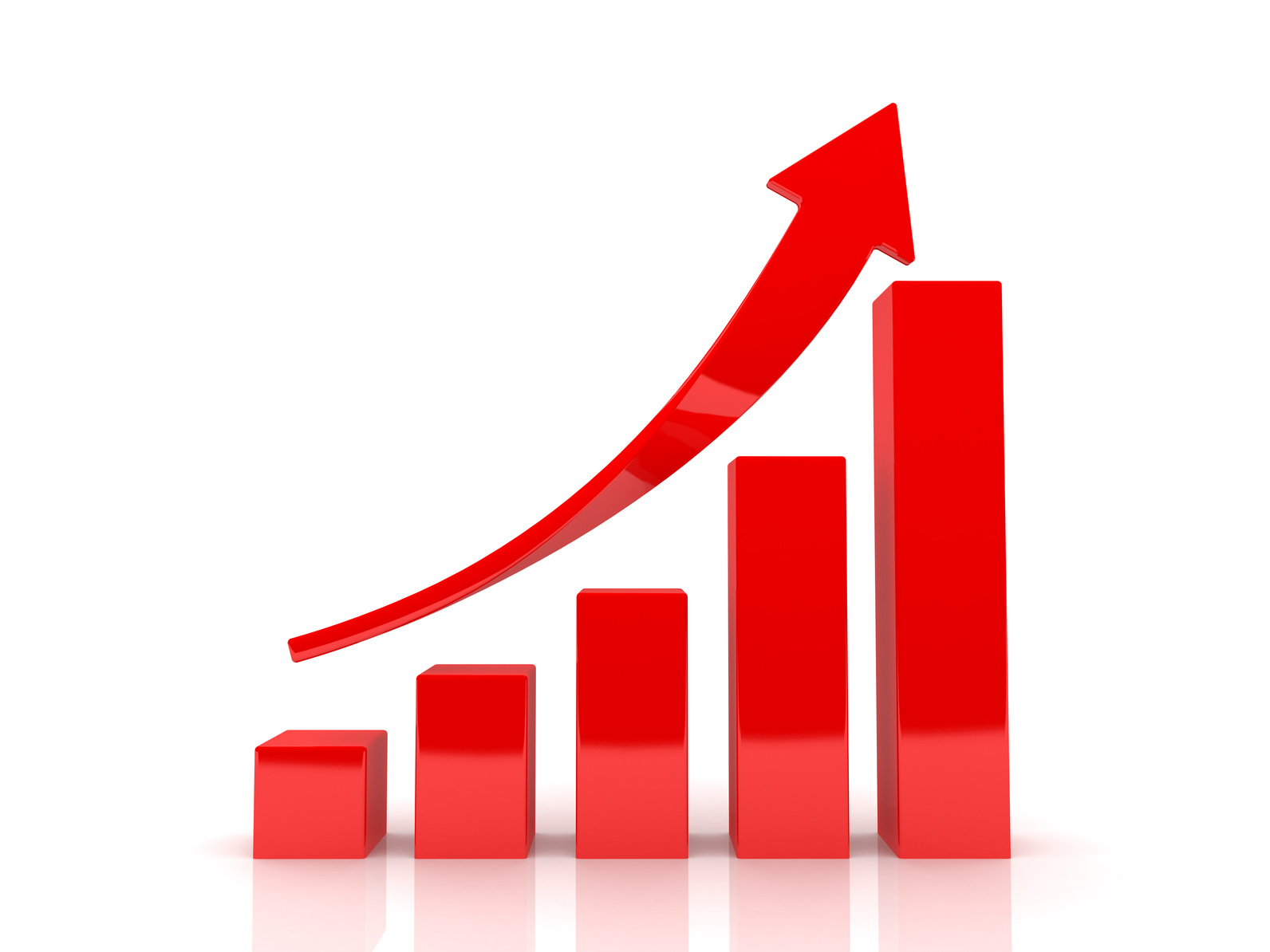
New Listings increased 3 percent to 14,873.
– Pending Sales increased 14.7 percent to 11,772.
– Closed Sales were stable, posting a 1 percent increase to 11,256.
– Days on Market decreased 9 percent to 50 days.
– Median Sales Price increased 4 percent to $208,500.
– Average Sales Price increased 4.5 percent to $256,125.
– Inventory levels decreased 13 percent to 38,169 units.
– Months’ Supply of Inventory was down 20 percent to 3.7 months.
Click here to access the full report for July.
New Home Sales Up 9% Over Last Year
Sales of newly built single-family homes are now 9.2 percent above last year’s level, according to new numbers from the U.S. Department of Housing and Urban Development and the U.S. Census Bureau.
This year-over-year improvement is important, especially since month-over-month results showed a 9.4 percent decline. In short, monthly housing data can be volatile but, if you focus on long-term results, it often reveals a much different picture.
That’s why, despite a drop in July, Michael Neal, senior economist with the National Association of Home Builders, says sales should continue to improve. “The year-to-date growth shows that new home sales continue to trend upward at a steady pace over the longer term,” Neal said. “Steady economic growth and a healthier labor market suggest that the underlying economic fundamentals remain in place for a continued recovery.” New home sales are an important barometer because new home construction helps balance the market and moderate price increases.
Also in the report, the median sales price of new houses sold in July was $313,700. The average sales price was $371,200. More here.
One Quarter Of Homeowners Are Equity Rich
 Equity can be loosely defined as the value of your house minus how much you owe on the mortgage. Which means, as you make your monthly mortgage payments, you’re gaining a larger share of your home’s value. In addition, if your home’s price goes up, so does your equity. Ultimately, the more you have, the better. That’s why the numbers from ATTOM Data Solutions’ Q2 2017 U.S. Home Equity & Underwater Report are good news for homeowners. The report shows more than 14 million U.S. properties were equity rich, meaning their remaining mortgage amount was 50 percent or less than the estimated value of their house. That’s 320,000 more than the previous quarter and nearly 25 percent of all U.S. properties with a mortgage. Daren Blomquist, senior vice president at ATTOM, says there are a couple of reasons behind the improvement. “An increasing number of U.S. homeowners are amassing impressive stockpiles of home equity wealth, enjoying the benefits of rapidly rising home prices while staying conservative when it comes to cashing out on their equity – homeowners are staying in their homes nearly twice as long before selling as they were prior to the Great Recession, and the volume of home equity lines of credit are running about one-third of the level they were at during the last housing boom,” Blomquist says. More here.
Equity can be loosely defined as the value of your house minus how much you owe on the mortgage. Which means, as you make your monthly mortgage payments, you’re gaining a larger share of your home’s value. In addition, if your home’s price goes up, so does your equity. Ultimately, the more you have, the better. That’s why the numbers from ATTOM Data Solutions’ Q2 2017 U.S. Home Equity & Underwater Report are good news for homeowners. The report shows more than 14 million U.S. properties were equity rich, meaning their remaining mortgage amount was 50 percent or less than the estimated value of their house. That’s 320,000 more than the previous quarter and nearly 25 percent of all U.S. properties with a mortgage. Daren Blomquist, senior vice president at ATTOM, says there are a couple of reasons behind the improvement. “An increasing number of U.S. homeowners are amassing impressive stockpiles of home equity wealth, enjoying the benefits of rapidly rising home prices while staying conservative when it comes to cashing out on their equity – homeowners are staying in their homes nearly twice as long before selling as they were prior to the Great Recession, and the volume of home equity lines of credit are running about one-third of the level they were at during the last housing boom,” Blomquist says. More here.
Landscaping is Key to Curb Appeal
 Good landscape design can help you get a better price when it's time to move but will also help beautify your neighborhood and please your neighbors in the meantime. If you aren’t that handy in the garden, start with your lawn. A recent article from Freddie Mac lays out a number of tips to help you get started. Among them, good to first identify what type of grass you have. This will help you know what seed to buy if you need to fill any dead spots. You should also be careful not to cut your lawn too short or give it too much water. Grass needs a little length to help it absorb sunlight and maintain healthy roots. Too much watering can also damage roots and will cause more weeds to grow. Another tip is to be careful with fertilizers and pesticides. Break fertilizer applications up throughout the season rather than doing it all at once. And be careful with pesticides, as they may be more trouble than they're worth. According to the article, lawn issues are more likely going to be the result of water, weather and lawn mower damage than pests. Following these simple rules should help you achieve a greener and more luscious lawn. More here.
Good landscape design can help you get a better price when it's time to move but will also help beautify your neighborhood and please your neighbors in the meantime. If you aren’t that handy in the garden, start with your lawn. A recent article from Freddie Mac lays out a number of tips to help you get started. Among them, good to first identify what type of grass you have. This will help you know what seed to buy if you need to fill any dead spots. You should also be careful not to cut your lawn too short or give it too much water. Grass needs a little length to help it absorb sunlight and maintain healthy roots. Too much watering can also damage roots and will cause more weeds to grow. Another tip is to be careful with fertilizers and pesticides. Break fertilizer applications up throughout the season rather than doing it all at once. And be careful with pesticides, as they may be more trouble than they're worth. According to the article, lawn issues are more likely going to be the result of water, weather and lawn mower damage than pests. Following these simple rules should help you achieve a greener and more luscious lawn. More here.

